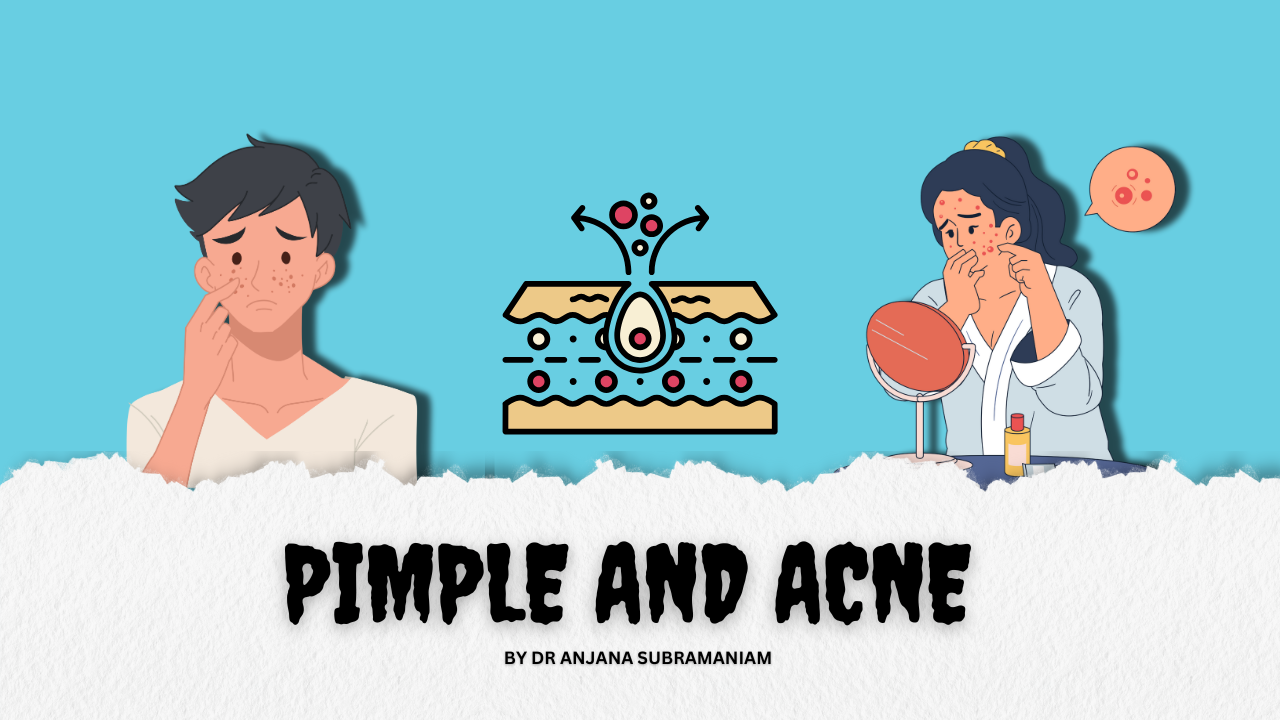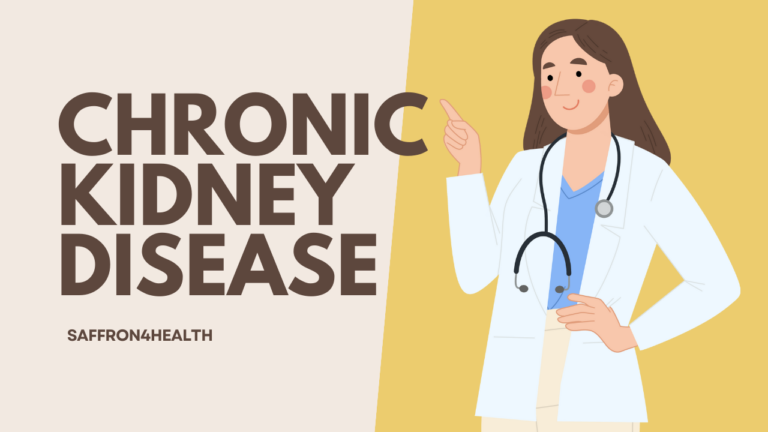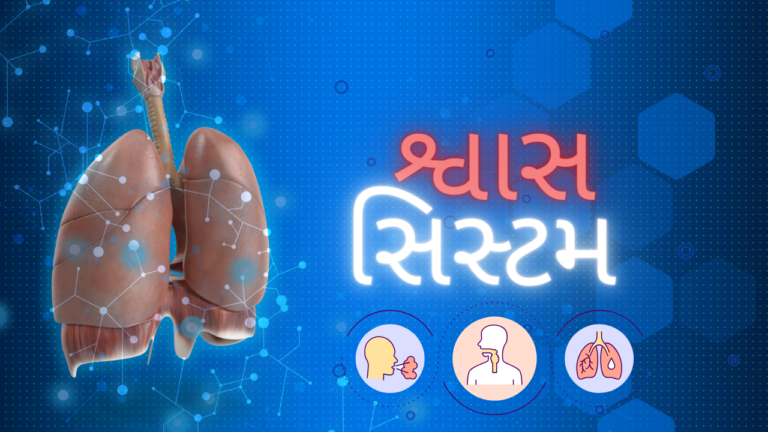PIMPLE AND ACNE
Understanding the Root Causes of Pimples and Acne: A Naturopathic Perspective

Pimples and acne are common concerns for many individuals. While these skin conditions may seem like small or superficial problems, their root causes often go much deeper. From a naturopathic standpoint, these issues are signs of an internal imbalance in the body that needs to be addressed holistically.
The Underlying Imbalance
Acne and pimples are more than just surface-level issues; they are often signals that something within the body is out of balance. Whether it’s due to an over-accumulation of toxins or an immune system response, these conditions reflect deeper internal disruptions. Naturopathy, which emphasizes the body’s innate ability to heal, highlights the importance of identifying and correcting these imbalances, rather than just treating the symptoms.
A Key Principle in Naturopathy
To illustrate this approach, let’s refer to a foundational concept in naturopathy: “Illnesses are always deep-rooted, and symptoms are merely surface indicators.” In other words, symptoms like acne or pimples are the body’s way of signaling that something is wrong internally. Simply focusing on clearing the skin or suppressing the visible effects won’t resolve the core issue that is driving the problem.
Causes of Acne: A Deeper Look
Several factors can lead to pimples and acne, including:
- Over-accumulation of toxins: When the body is overwhelmed by toxins—whether from poor diet, pollution, or stress—it can manifest through the skin, the body’s largest detoxification organ.
- Overactivity of the immune system: Acne might also be a sign that the immune system is overreacting, leading to inflammation that shows up on the skin.
- Autoimmune conditions: In some cases, persistent or severe acne may be linked to autoimmune responses, such as acne vulgaris, where the body begins to attack its own tissues.
The Body’s Healing Mechanism
In all these scenarios, the body is attempting to restore balance by purging toxins or calming inflammation. Acne, then, can be viewed as the body’s effort to heal itself, albeit in a way that may be uncomfortable or unwelcome. Rather than suppressing this process with harsh treatments, naturopaths aim to support the body’s natural detoxification and healing mechanisms.
Focus on the Cause, Not the Symptom
For naturopathic physicians, both practicing and in training, it’s important to understand that the symptom should not be the primary focus. Instead, attention must be given to the underlying cause that is creating the imbalance. This might involve addressing diet, lifestyle, emotional stress, or hormonal imbalances, depending on the individual’s unique circumstances.
By focusing on the root causes and supporting the body in its natural healing processes, we can achieve not only clearer skin but also overall improved health.
The Ship of Reason: Understanding the ‘Three Ws and One H’ in Naturopathic Practice
When approaching any health condition as a clinician, it is essential to adopt a structured and reasoned methodology. This approach is represented by what I call the “Ship of Reason”, a concept borrowed from my uncle, a marine engineer, and adapted to clinical practice. It serves as a guiding principle to help naturopathic physicians uncover the root causes of illness.
The Three Ws and One H
The foundation of this method is based on asking three critical ‘W’ questions and one ‘H’ question, which serve as the pillars for any thorough health assessment:
- Why: Why has this condition occurred? Understanding the underlying triggers and factors—whether it’s lifestyle, stress, or environmental issues—is crucial in addressing the root of the problem.
- What: What is the condition? Accurately identifying the condition itself, its symptoms, and how it manifests in the patient provides clarity on the best approach to treatment.
- When: When did the issue start? Establishing the timeline helps to pinpoint any triggering events or changes in the patient’s life that may have contributed to the onset of the condition.
- How: How did the condition develop or progress? Understanding the progression of the illness offers insight into its current stage and helps in formulating a treatment plan that addresses both the present symptoms and the underlying cause.
Applying the ‘Ship of Reason’ in Practice
These questions are essential during patient history-taking. As clinicians, it is our responsibility to dig deeper into these questions to understand the patient holistically, beyond just the symptoms they present with.
In my experience, many patients who come to integrative or naturopathic healthcare have already explored multiple treatment options, particularly in conventional medicine like allopathy. They often turn to naturopathy as a last resort, seeking solutions after other treatments have failed to provide relief.
The Difference Between Allopathy and Naturopathy
Both allopathy and naturopathy play valuable roles in healthcare, but they approach healing differently:
- Allopathy is symptom-specific and focuses on immediate relief. It is excellent at addressing acute symptoms or providing quick fixes, but it may not always address the underlying cause of chronic conditions.
- Naturopathy, on the other hand, is root-cause-focused. It aims to uncover the deeper imbalances in the body and create long-term health by treating the origin of the illness, rather than just the symptoms.
Both systems of medicine are important and should coexist harmoniously. Allopathic medicine may be necessary in emergency situations, while naturopathy provides long-term support for chronic issues. As naturopathic clinicians, however, our primary focus must be on understanding and addressing the root causes.
Figuring Out the Root Cause
Using the ‘Three Ws and One H’ approach helps us as naturopaths determine the underlying causes of health conditions. Whether it’s toxins, stress, autoimmune issues, or environmental factors, identifying the root cause is the key to true healing. By focusing on these fundamental questions, we can create a more comprehensive, individualized treatment plan that promotes overall wellness.
The “Ship of Reason” represents a logical and holistic framework for approaching health conditions in naturopathic practice. By asking the right questions—Why, What, When, and How—we can delve deeper into the root causes of illness, providing patients with more sustainable and effective solutions. Naturopathy’s focus on addressing imbalances and supporting the body’s natural healing processes makes it a powerful tool for long-term health and well-being.
Clinical Insights: Differentiating Pimples and Their Root Causes

In this section, I will provide key clinical points to help differentiate between common skin conditions like pimples and how to understand their underlying causes. Remember, the points discussed here are a general guide, and the accompanying slides will be available for reference. If you have any questions or need further clarification, feel free to reach out.
What Are Pimples?
Pimples, as many of us are familiar with, are red, tender bumps that appear on the skin. They are typically isolated, meaning they do not occur in clusters like other skin conditions such as acne. A defining feature of pimples is that they are filled with pus at the tip, making them a biogenic condition, which indicates an infection in the skin.
Pimples and Detoxification Deficiency
In naturopathy, the presence of pimples often signifies a detox deficiency or imbalance within the body. The skin, being one of our primary excretory organs, plays a vital role in detoxification, working alongside the liver, lungs, kidneys, and intestines. When the body’s internal environment (also known as the terrain in naturopathic medicine) becomes toxified or overloaded with toxins, the skin reacts by attempting to expel these toxins, often leading to the appearance of pimples.
Hormonal Component of Pimples
Pimples are frequently linked to hormonal changes in the body, particularly during adolescence and menopause. For example:
- Teenagers experience hormonal surges, such as increases in androgen levels in men and fluctuating estrogen and progesterone levels in women. This hormonal activity often triggers the appearance of pimples.
- Women in menopause also experience hormonal imbalances that can result in pimples due to changing levels of estrogen, progesterone, and androgens.
Common Occurrence and Location
Pimples typically appear in the upper quadrant of the body, especially in areas where there is a high concentration of sweat glands. These areas include the:
- Face: A common site for pimples, particularly in areas prone to sweating.
- Neck and back: Pimples can occur where there is friction or sweating.
- Armpits: Another sweat-prone area, though less common for pimples.
- Buttocks: Rarely, pimples can appear on the buttocks, which may indicate a vitamin A deficiency.
Pimples vs. Other Skin Conditions
It’s important to differentiate pimples from other, often contagious, skin conditions such as shingles or herpes, which require different treatment approaches. Pimples are:
- Non-contagious: Unlike shingles or herpes, pimples cannot be transmitted from one person to another.
- Self-limiting: They often resolve on their own, particularly premenstrual pimples, which are common and usually do not require medical intervention.
- A symptom, not the cause: Pimples themselves are not the issue; they are simply a symptom of underlying problems such as detox deficiency or hormonal imbalance.
Pimples, while often a cosmetic concern, are actually a sign that the body is attempting to detoxify itself and may also indicate a hormonal imbalance. They tend to be self-limiting, non-contagious, and often associated with hormonal shifts or vitamin deficiencies. In naturopathy, it’s crucial to understand that pimples are merely a symptom of a deeper issue, not the root cause, which needs to be addressed for long-term healing and skin health.
Understanding Acne: A Holistic Approach

Acne, a common skin condition, often persists and manifests as clusters of pimples. Unlike the occasional pimple, acne, medically referred to as Acne Vulgaris, involves a more complex and deeper-rooted problem. Its appearance is easily recognizable by the close-knit clusters of pimples, often inflamed and red. But acne is not just a surface-level issue; it’s a condition that demands a more thorough understanding of its underlying causes to ensure effective treatment.
Root Causes of Acne
To treat acne holistically, we must address the root causes that contribute to its development. Several factors interplay to trigger or exacerbate acne:
1. Immune Health
Acne is closely linked to immune system imbalances. Individuals who are either immunocompromised or have immune hypersensitivity are prone to persistent acne. These patients often report frequent seasonal allergies, sneezing, or sinus issues. A compromised immune system or an overactive response, such as allergies, can manifest on the skin through inflammation and acne.
2. Endocrine System and Insulin Resistance
Endocrine imbalances, particularly insulin resistance, play a significant role in acne development. Signs of insulin resistance often include weight gain around the abdomen, sometimes referred to as a “spare tire.” This can indicate sluggish liver function and fat accumulation under the skin. Hormonal imbalances involving testosterone or DHEA can also contribute to acne, especially when insulin levels are not properly managed.
3. Nutritional Deficiencies
Nutritional imbalances are another major contributor to acne. Many patients with acne are deficient in omega-3 fatty acids and rely heavily on vegetable and seed oils, which are often refined. Healthy fats, such as omega-3s, are essential for maintaining skin health. Moreover, deficiencies in vitamin D3, crucial for immune and endocrine functions, further worsen the condition. Patients who avoid fats to lose weight or lower cholesterol may inadvertently deprive their skin of essential nutrients.
4. Stress and Sympathetic Dominance
Stress has a profound impact on the skin. When we experience stress, the body enters a state of sympathetic dominance, where the fight-or-flight response is activated. This elevates cortisol levels, the body’s primary stress hormone, which mobilizes glucose and fats into the bloodstream, contributing to acne. Historically, this response was useful for survival in dangerous situations, but in modern times, chronic low-grade stress (e.g., from work, relationships, or multitasking) triggers the same hormonal response. This leads to the production of excess sebum, the oily substance on the skin, which can clog pores and exacerbate acne.
Differentiating Between Pimples and Acne
It’s essential to distinguish between simple pimples and persistent acne. Pimples are often self-limiting and can be treated with basic home remedies such as keeping the skin clean and hydrated. However, acne is a more systemic issue and requires a comprehensive approach.
In naturopathy, we look beyond the surface of the skin. While conventional allopathic treatments focus on topical applications like zinc oxide or retinoids to control inflammation and itching, naturopathy digs deeper into the patient’s overall health. We assess their diet, stress levels, environment, and detoxification processes, focusing on treating the root cause rather than just the symptom.
The Gut-Skin Connection
One of the critical points to understand about acne is its connection to gut health. Acne often begins with an imbalance in the gut. A compromised digestive system can lead to systemic inflammation, poor detoxification, and nutrient deficiencies, all of which contribute to acne. Therefore, healing the gut is an essential part of treating acne holistically.
When a person presents with acne, it’s essential to consider a wide range of factors, including immune health, hormonal balance, nutritional status, stress management, and gut health. This in-depth, personalized approach to understanding the root causes of acne sets naturopathy apart from conventional medicine. Instead of just focusing on topical treatments, a holistic approach aims to restore balance to the entire system, ensuring long-term skin health and well-being.
Understanding Acne: The Role of Hormones, Makeup, and Natural Remedies
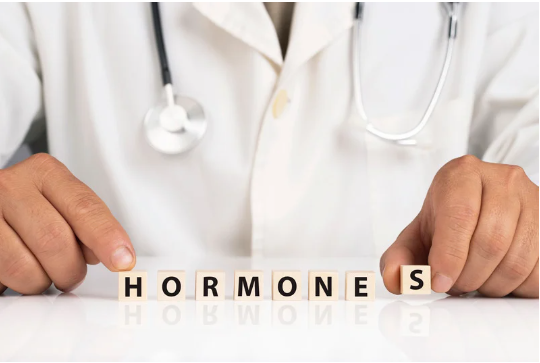
Acne is a common skin condition that affects people of all ages, particularly during periods of hormonal changes. While many factors contribute to acne, two primary influences often overlooked are hormonal imbalances and the use of certain makeup products. Let’s explore how these elements affect the skin and how natural remedies can offer relief.
Hormonal Imbalance and Acne: The Underlying Cause
Acne is often the result of hormonal fluctuations, especially during adolescence, pregnancy, or menstrual cycles. Hormones like androgens increase the production of sebum, the skin’s natural oil, which can clog pores and lead to pimples. This is why acne tends to be more prevalent during these periods of life.
For many women, acne flare-ups coincide with hormonal shifts, which is why a thorough hormonal evaluation can often help identify the root cause of persistent or severe acne. Monitoring the frequency and timing of breakouts can give important clues about whether hormones are playing a significant role. For example, if acne tends to worsen around the menstrual cycle or during times of stress, it might be linked to hormonal changes.
The Hidden Culprit: Makeup Ingredients and Acne
Another often overlooked factor contributing to acne is the makeup we use daily. Many cosmetic products contain synthetic ingredients that can block the skin’s natural ability to detoxify and regenerate. Common chemicals in makeup that are particularly harmful to acne-prone skin include:
- Formaldehyde: Often found in various forms in cosmetics, this chemical can irritate the skin and clog pores.
- Sodium Lauryl Sulfate (SLS): Frequently used in beauty products like cleansers and shampoos, SLS can strip the skin of natural oils, leading to overproduction of sebum and clogged pores.
- Benzoates: Preservatives used in cosmetics that can cause skin irritation and contribute to acne formation.
When these ingredients are applied to the skin, they effectively “seal” the pores, preventing the natural excretion of sweat and oil. Imagine a tunnel where the exit has been blocked—this is essentially what happens when synthetic makeup products clog pores. Over time, this leads to a buildup of oil and bacteria, causing acne to form.
In severe cases, acne can become widespread, as seen in one clinical example where a patient had acne that covered not only her face but also her back. The condition was so extensive that it was initially mistaken for shingles. However, after careful examination, the acne was identified by the characteristic pinpoint lesions filled with pus.
Addressing Acne: Topical Solutions and Lifestyle Changes

While hormonal imbalance and synthetic makeup contribute to acne, the good news is that there are natural ways to manage and reduce its occurrence. The key to treating acne holistically is focusing on both external and internal factors. Here are some effective approaches:
- Topical Treatments: Several natural ingredients have been proven to soothe acne-prone skin. These include:
- Aloe Vera: Known for its anti-inflammatory properties, aloe vera helps reduce redness and swelling.
- Sandalwood: This ancient remedy is effective in treating acne due to its cooling and soothing properties.
- Red Turmeric (Red Haldi): Red turmeric has antibacterial and anti-inflammatory benefits, making it a potent natural remedy for acne.
- Hydration: Drinking plenty of water is crucial for maintaining skin health. Hydration helps flush out toxins from the body and keeps the skin clear.
- Nutrition: Diet plays a significant role in managing acne. Avoiding processed foods, sugar, and dairy, which can trigger hormonal imbalances, and incorporating a diet rich in fruits, vegetables, and healthy fats can help regulate sebum production and reduce breakouts.
- Makeup Choices: Opting for natural, non-comedogenic makeup products that allow the skin to breathe is essential. Look for products that are free of harmful chemicals like formaldehyde, SLS, and benzoates.
Acne is a multifaceted condition that often requires a comprehensive approach to treatment. By understanding the role of hormonal imbalances and the potential harm caused by synthetic makeup ingredients, we can make better choices for our skin. Embracing natural remedies, maintaining hydration, and making conscious dietary choices can lead to clearer, healthier skin over time.
When dealing with persistent acne, it’s essential to consult a healthcare provider for personalized advice. A holistic approach that addresses both the internal and external causes of acne is the most effective way to achieve lasting results.
Factors Contributing to Acne and Systemic Health Issues:
Understanding the root causes behind systemic health issues like acne involves examining multiple factors that contribute to the overall health of the body. While there are numerous potential causes, some key factors often stand out and should ring a bell in a clinical setting. Here’s an exploration of some primary systemic causes behind these issues:
1. Gut Health:
A critical contributor to many diseases, including acne, is poor gut health. As a functional medicine practitioner, I’ve observed that most diseases, to some extent, begin in the gut. Gut health influences digestion, immune function, and even skin conditions like acne.
- Poor Digestion
Today, most of us are aware of healthy eating habits and the importance of certain nutrient-dense foods like chia seeds, flaxseeds, and oats. However, despite these changes, chronic lifestyle diseases have surged by 50-60% in the past decade. The reason? We are what we digest, not just what we eat. Even a protein-rich diet won’t be beneficial if our stomach lacks adequate hydrochloric acid (HCL) to break down the protein. Undigested food begins to decay in the gut, leading to gas, bloating, acidity, and autoimmune conditions—including acne.
2. Immune Hypersensitivity:
When food isn’t digested properly, our bodies fail to absorb essential nutrients, further weakening our immune system. Add to that the constant influx of toxins from GMO crops and compromised soil, and the immune system is constantly on alert. This continuous state of defense leads to immune hypersensitivity, where the body is always “ready for battle,” increasing the likelihood of inflammatory conditions like acne.
3. Poor Detoxification:
Detoxification is crucial for maintaining health, but in modern times, our bodies are overwhelmed by environmental toxins, leading to inefficient detox processes. Whether it’s air, food, or water, we are constantly exposed to harmful substances that our bodies need to eliminate. The liver, kidneys, and skin (our largest detoxifying organ) are all burdened with excess toxins, which can manifest in skin conditions like acne.
- Heavy Metal Poisoning
One particularly concerning factor is heavy metal poisoning, especially from everyday products like makeup and skincare. Many whitening creams and facial products contain high amounts of lead, cadmium, and arsenic, which are absorbed into the body and wreak havoc on the skin. This problem is prevalent among both men and women, as many individuals are highly conscious of their appearance and grooming.
4. Intestinal Parasites:
Gut health issues can also be exacerbated by intestinal parasites. A case in point was a 32-year-old patient who developed severe bloating, stomach cramps, and acne after an undetected H. pylori infection. Once the bacterial infection was treated, her skin condition improved dramatically, highlighting the connection between gut health and acne.
5. Beneficial Gut Bacteria Imbalance:
Maintaining a balance of good and bad bacteria is vital for gut health. The two major beneficial probiotic species, Lactobacillus and Bifidobacterium, are essential for maintaining this balance. A disruption in these bacteria can lead to an imbalance, affecting digestion, immune response, and skin health. When recommending probiotics, it’s essential to ensure these species are included.
The health of the gut is the foundation of overall well-being. While systemic factors like poor digestion, immune hypersensitivity, and environmental toxins contribute to conditions like acne, addressing gut health through proper diet, digestion, and detoxification can have a profound effect on reducing inflammation and restoring balance.
External Factors Affecting Skin Health
When it comes to maintaining healthy skin, various external factors play a crucial role. Let’s explore some of these influences and how they affect the condition of our skin:
1.Environmental Pollutants
One of the most common external factors impacting skin health is exposure to environmental pollutants. These can include air pollution, toxins, and harsh chemicals. These pollutants often clog the pores, leading to breakouts and other skin issues. Prolonged exposure may even accelerate the skin’s aging process.
2.Synthetic Clothing and Natural Fibers
Synthetic clothing, though convenient, can also irritate the skin. Natural fibers like cotton, though more breathable, can be difficult to maintain, leading many to opt for synthetic alternatives. However, synthetic fabrics often trap sweat and bacteria, which can contribute to skin problems like rashes and acne. Therefore, selecting skin-friendly fabrics plays a critical role in skin health.
3.Unhygienic Cosmetics
The importance of maintaining hygiene while using cosmetics cannot be overstated. Brushes, sponges, and other makeup tools must be regularly cleaned to prevent the buildup of bacteria, which can cause infections or breakouts. Although applying makeup can be time-consuming, the upkeep of these tools is equally vital for preventing skin-related issues.
4.Regular Debriding of the Skin
Debriding refers to the process of exfoliating or peeling off the upper epidermal layer of the skin. While this practice is common in beauty routines, frequent debriding can sometimes lead to unintended consequences. Removing the skin’s outermost layer can create small, localized injuries, leaving the skin dry and more vulnerable to environmental damage. In response, the body may produce more sebum (skin oil) to compensate, which can lead to acne and oily skin.
5.Long-Term Use of Retinoids
Retinoids have gained popularity in skincare for their anti-aging and anti-wrinkle properties. They help to brighten the skin and reduce the appearance of fine lines and wrinkles. However, prolonged use can sometimes have adverse effects. Some users experience irritation, dryness, or peeling as their skin becomes sensitive to these powerful compounds. Similarly, salicylic acid, often used to treat dry skin, can cause peeling and dryness when used excessively.
The Role of Skincare Procedures
Many individuals turn to skincare treatments such as cold laser therapy and chemical peels to enhance their skin’s appearance. While effective, these treatments should be done carefully. Overuse or improper application can lead to over-drying of the skin, irritation, or even long-term damage.
Types of Acne and Skin Lesions
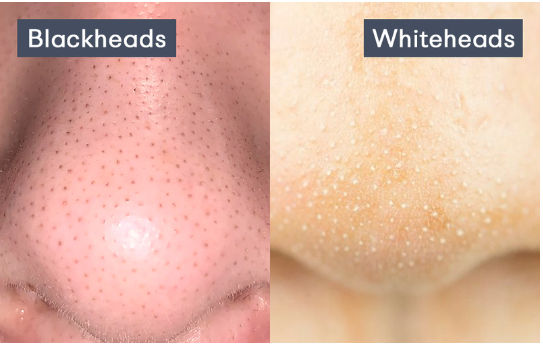
After understanding the various external factors affecting skin health, it’s essential to recognize the types of acne and skin lesions that result from these conditions. Each type of acne has unique characteristics and clinical symptoms, making it crucial to identify and treat them correctly. Below are the different types of acne and skin lesions:
1. Blackheads
Blackheads, or open comedones, are non-inflammatory forms of acne. They appear as small, black dots on the skin, resulting from dead skin cells and oil that clog the pores. Despite their appearance, blackheads are not painful because there is no inflammation associated with them.
2. Whiteheads
Whiteheads, or closed comedones, occur when the pores are clogged with oil and dead skin cells but remain closed at the surface. These appear as small, white, or yellow bumps on the skin. Unlike blackheads, whiteheads do not have an open pore, and though they are visible, they aren’t typically painful.
3. Nodules
Nodular acne is a more severe type of acne. These nodules are large, hard, and painful bumps that develop deep beneath the skin’s surface. They are often confused with other skin conditions like shingles or heat rash, but nodules are distinct because they are painful and widely spaced, unlike the closely grouped bumps seen in rashes. These nodules require careful clinical evaluation to differentiate from other skin conditions.
4. Pustules
Pustules are inflamed, pus-filled lesions that resemble whiteheads but are much larger and more painful. They are usually red and swollen, and people with pustules often have the urge to pick or scratch at them, which can lead to scarring or infection.
5. Cysts
Cystic acne is one of the most severe forms of acne. It manifests as large, painful, pus-filled boils that occur deep beneath the skin’s surface. Cysts are often a sign of severe acne vulgaris, known as cystic acne. They are more common in individuals who have overactive sebaceous glands and are typically seen around the cheek area, where oil production is high. This form of acne can lead to scarring if not properly treated.
6. Papules
Papules are small, raised, red bumps that are often tender to the touch. While not as common as some other types of acne, papules are still noteworthy because they can become more inflamed and painful if left untreated. Papules are commonly seen in people with fairer skin and often cause redness and irritation.
Emotional Impact of Acne
Acne, especially when severe, can have a significant emotional and psychological impact. Those with fairer skin types may experience more noticeable redness and inflammation, which can contribute to feelings of self-consciousness or embarrassment. Acne can lead to emotional distress due to its visible nature and the stigma often associated with it.
By understanding these different types of acne and their characteristics, you can take more targeted approaches to treatment and prevention, ensuring healthier skin and improved emotional well-being.
The Emotional Impact of Acne and Skin Conditions
While conditions like acne and other skin lesions are not life-threatening, their emotional and psychological effects can be profound, particularly among young adults. The perception of one’s body image and self-esteem can be significantly impacted by the presence of acne, leading to a host of emotional challenges.
Why Study Acne?
- Body Image and Self-Esteem: Acne often plays a crucial role in shaping how individuals perceive themselves. For many, especially young adults and women, the appearance of skin can be an indicator of overall health and beauty. When skin conditions are visible, they can lead to feelings of inadequacy and low self-worth.
- Social and Emotional Effects: Society often places a high value on clear skin, which can amplify feelings of anxiety and depression in individuals with acne. Studies show that individuals with acne are more likely to experience social anxiety, decreased self-esteem, and even depression.
A Case Study: The Emotional Toll of Acne
To illustrate the impact of acne on mental health, consider the case of a 23-year-old girl who experienced a devastating rejection due to her acne. During a public interaction, a boy criticized her appearance, comparing her face to “an oily poodie” that had just come out of the pan. Although she had previously accepted her skin condition, the boy’s harsh words triggered a deep emotional response, leading her to develop subclinical depression.
This case exemplifies how external opinions can dramatically affect an individual’s mental health. Despite the girl’s initial resilience regarding her acne, the stigma attached to it catalyzed a decline in her emotional well-being, prompting her to seek help for depression rather than acne.
Understanding the emotional implications of acne is vital. While the physical aspects of skin conditions are often the focus of medical study and treatment, the emotional and psychological effects are equally important. Acknowledging and addressing the feelings of inadequacy, embarrassment, or depression that can arise from acne is crucial for providing comprehensive care and support for individuals suffering from these conditions. Recognizing the intricate connection between skin health and mental well-being can lead to more empathetic and effective approaches in dermatological practice and mental health support.
Diagnostic Methods for Skin Conditions
Understanding and diagnosing skin conditions, particularly those related to hormonal imbalances such as acne and PCOS (Polycystic Ovary Syndrome), involves both subjective history-taking and objective evaluations. Here’s a breakdown of the diagnostic methods used by clinicians:
1. Subjective vs. Objective Evaluation
- Subjective History: This involves gathering detailed personal and medical history from the patient. It helps clinicians understand the patient’s lifestyle, symptoms, and any potential triggers for their condition.
- Objective Evaluation: This refers to measurable data collected through physical examinations and lab tests. Objective evaluation helps in confirming the diagnosis and ruling out other conditions.
2. Hormonal Level Tests
Several blood tests are commonly used to assess hormone levels, which can significantly influence skin health:
- DHEA and Serum Testosterone: These tests measure levels of dehydroepiandrosterone (DHEA) and testosterone, which can indicate androgen excess associated with conditions like PCOS.
- Fasting Insulin and Fasting Glucose:
- Fasting Insulin: A measurement of insulin levels after fasting, which helps in assessing insulin resistance and hyperinsulinemia.
- Fasting Glucose: This measures blood sugar levels after fasting.
- HOMA-IR (Homeostasis Model Assessment of Insulin Resistance): This index is calculated using fasting insulin and glucose levels. A HOMA-IR value greater than 5 indicates insulin resistance.
3. Physical Measurements
- Waist-to-Hip Ratio: This measurement can indicate body fat distribution and associated health risks. The waist is measured at the narrowest point, or two inches above the navel, and the hip at its widest part. A ratio of less than 1 is considered healthy.
- Waist-to-Height Ratio: While this is a useful indicator, it may not always be measured in clinics due to the lack of height measuring tools.
4. Additional Hormonal Tests for PCOS Diagnosis
To diagnose PCOS, several hormonal tests are essential:
- Estradiol (E2) Test: This test measures the level of estradiol, a form of estrogen.
- Hydroxyprogesterone Test: This measures levels of hydroxyprogesterone, which can indicate hormonal imbalances.
- Serum Prolactin: Elevated levels can also indicate hormonal disturbances.
The ratio of estrogen to progesterone should be assessed, with a lower ratio indicating potential imbalances.
5. Thyroid Profile
- Thyroid Function Tests: Assessing thyroid hormone levels is critical, as the thyroid plays a vital role in metabolism. Abnormal thyroid levels can contribute to skin conditions and overall metabolic health.
In summary, diagnosing skin conditions requires a multifaceted approach that combines subjective patient history and objective clinical tests. These diagnostic methods help clinicians identify underlying hormonal imbalances, particularly in cases like PCOS, allowing for targeted treatment plans to improve both skin health and the patient’s overall well-being.
The Importance of Nutritional Deficiencies
Nutritional deficiencies can significantly impact various aspects of health, including skin condition. Identifying these deficiencies through specific tests allows healthcare providers to implement effective treatment strategies. Here are the key markers used to evaluate nutritional status:
1. Vitamin D
- Test: Vitamin D 25-OH Test
- Significance: Vitamin D plays a critical role in immune function, skin health, and overall well-being. Low levels of this vitamin have been linked to various skin conditions, including psoriasis and eczema. It is essential to consider measuring both Vitamin D2 and D3 levels, particularly in individuals showing signs of deficiency.
2. Vitamin B12 and Folate (Vitamin B9)
- Importance: Vitamin B12 and folate are essential for cellular function and overall health. Deficiencies in these vitamins can lead to various skin issues, including dryness and dermatitis. Assessing levels of these vitamins can help identify underlying health problems that may be contributing to skin conditions.
3. Vitamin A
- Test: Serum Vitamin A Test
- Significance: Vitamin A is crucial for maintaining healthy skin and mucous membranes. It is particularly important for patients experiencing dryness or who have recently recovered from infections or surgeries. Measuring serum vitamin A levels can provide insights into a patient’s skin health.
4. RBC Mineral Test
- Importance: A red blood cell (RBC) mineral test measures critical minerals that support gut health and immunity. The three essential minerals to evaluate are:
- Zinc: Vital for digestion, immune function, and skin repair. Zinc deficiency can lead to skin lesions and slower wound healing.
- Selenium: An important antioxidant that protects cells from oxidative stress. Selenium is also crucial for thyroid function and overall metabolism.
- Magnesium: This mineral plays a role in various biochemical reactions in the body and helps maintain balance in many systems, including the nervous system. A deficiency in magnesium can lead to issues such as muscle cramps and fatigue.
Assessing Immune Sensitivity
In addition to nutritional markers, immune sensitivity tests provide valuable information about how the body responds to various allergens and irritants. These markers are essential for diagnosing allergies and chronic immune conditions:
1. IgG (Immunoglobulin G)
- Importance: IgG is a marker that indicates chronic immune responses. Elevated levels suggest that a person has been exposed to an allergen or irritant over a prolonged period. Testing IgG levels can be particularly beneficial for individuals experiencing long-term skin conditions.
2. IgE (Immunoglobulin E)
- Importance: IgE is an acute marker that signals immediate allergic reactions or sporadic episodes of immune sensitivity. High IgE levels are indicative of histamine release, often associated with allergies. Assessing IgE can help identify environmental or food triggers that may be exacerbating skin conditions.
Understanding and evaluating diagnostic markers for nutritional deficiencies and immune sensitivities are vital steps in addressing skin conditions and promoting overall health. Regular testing of these markers allows healthcare providers to identify underlying issues and tailor treatment plans accordingly. By focusing on nutritional support and immune balance, clinicians can enhance their patients’ skin health and overall well-being, paving the way for improved quality of life.
Identifying Detoxification Issues and Inflammation Through Diagnostic Markers:
When assessing an individual’s health, it’s essential to recognize the role of detoxification and inflammation. Poor detoxification and persistent inflammation can lead to various health complications. This article delves into the specific markers that can help clinicians identify issues related to detoxification and inflammation, providing insight into potential interventions and treatment strategies.
Key Markers for Evaluating Detoxification and Inflammation
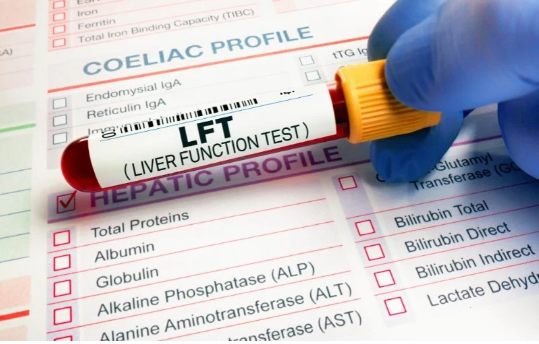
1. Liver Function Tests (LFTs)
A. Alanine Aminotransferase (ALT) and Aspartate Aminotransferase (AST)
- Importance: ALT and AST are enzymes that help assess liver function. ALT is particularly indicative of liver health, as the “L” in ALT stands for “liver.” Elevated levels may suggest liver damage, inflammation, or dysfunction, highlighting the need for detoxification support.
B. Gamma-Glutamyl Transferase (GGT)
- Importance: GGT is a marker that reflects gallbladder health. An elevated GGT level can indicate issues with bile secretion or gallbladder function. A sluggish gallbladder can lead to poor digestion and the accumulation of toxins, warranting further investigation into a patient’s detoxification pathways.
2. White Blood Cell Count (WBC) with Differential
- Importance: A WBC count with differential helps determine the presence of infection. Changes in the levels of neutrophils and eosinophils can indicate an acute inflammatory response. For example, a borderline increase in these cells may suggest an underlying infection or inflammation. In such cases, healthcare providers may recommend anti-inflammatory strategies, such as dietary interventions (e.g., fenugreek seeds) to support recovery.
3. C-Reactive Protein (CRP)
- Importance: CRP is a protein produced by the liver in response to inflammation. Elevated CRP levels indicate chronic inflammation and can signal underlying conditions such as fatty liver disease or other persistent infections. Monitoring CRP levels allows clinicians to evaluate the effectiveness of treatment plans aimed at reducing inflammation.
4. Serum Homocysteine
- Importance: Homocysteine is an amino acid produced during the metabolism of methionine. Elevated levels of serum homocysteine can indicate inflammation and have been associated with an increased risk of cardiovascular diseases. Monitoring homocysteine levels provides insight into a patient’s inflammatory status and overall health.
Identifying issues related to detoxification and inflammation is crucial for maintaining optimal health. By using specific markers such as liver function tests, white blood cell counts, C-reactive protein, and serum homocysteine levels, healthcare providers can gain valuable insights into an individual’s health status. Regular monitoring and timely interventions can help alleviate inflammation, support detoxification, and improve overall well-being, leading to enhanced health outcomes.
How Naturopathy Helps
Naturopathy is a form of medicine that emphasizes the importance of treating the root cause of health issues rather than merely addressing symptoms. As Hippocrates famously stated, “Physician treats, but nature heals.” This holistic approach aids clinicians in reestablishing balance within the body, focusing on immune modulation instead of suppression.
Root Cause Analysis
One of the key principles of naturopathy is understanding that health problems often originate from various underlying causes. Therefore, taking a thorough patient history is vital to uncovering what might be leading to specific symptoms. For example, conditions like acne often stem from gut health rather than the skin itself. Thus, recognizing that symptoms may not always reflect the underlying issue is crucial in naturopathic practice.
Detoxification and Immune Modulation
Naturopathy aims to facilitate detoxification and promote immune modulation. By utilizing natural therapies, it helps the body to detoxify more effectively, supporting the immune system rather than suppressing it. This approach encourages the body to restore its natural equilibrium, contributing to overall health.
Food as Medicine
An essential tenet of naturopathy is the belief that food can serve as medicine. “We are what we eat” resonates deeply in this practice, emphasizing the importance of not only the food we consume but also how well we digest it. Naturopathy encourages individuals to adopt a nutrient-rich diet, enabling them to harness the healing potential of food.
Maintaining Homeostasis
Finally, naturopathy aims to maintain homeostasis, the state of balance and stability within the body. By promoting practices that support overall well-being, naturopathy can play a significant role in restoring health and preventing future health issues.
Detoxification Practices in Naturopathy
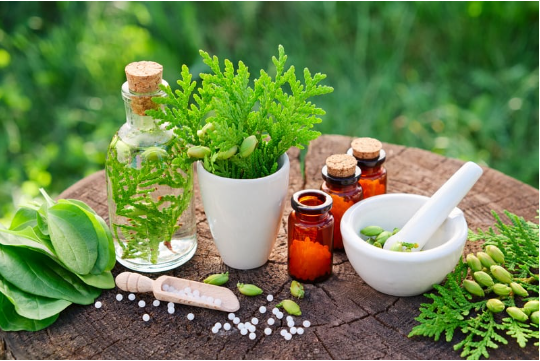
Detoxification is an essential aspect of naturopathy, aimed at cleansing the body and restoring its natural balance. Here are some key methods and practices that can help facilitate effective detoxification:
1. Fasting
Fasting is one of the most effective ways to initiate detoxification. It allows the body to rest and heal by abstaining from food, giving it a chance to eliminate toxins and reset.
2. Enemas and Colonic Irrigation
An enemas or colonic irrigation (high or low) can aid in clearing the intestines of waste and toxins. These methods are particularly beneficial for improving gut health.
3. Pranayama
Pranayama, or controlled breathing exercises, helps detoxify the respiratory system. These practices enhance lung function and promote overall well-being.
4. Shank Prakshalana
A yogic practice that involves drinking warm lime water followed by a series of specific movements to cleanse the digestive tract. This process helps in flushing out toxins from the gastrointestinal system.
5. Castor Oil and Mud Packs
Using castor oil packs can aid in detoxification through skin absorption. Mud packs, particularly on the face and abdomen, can help draw out impurities and soothe inflammation.
6. Asanas for Detoxification
Specific yoga asanas (postures) are effective in stimulating liver and kidney function. Forward bending and backward bending poses are particularly beneficial for enhancing detox processes.
7. Kriyas
Kriyas are yogic cleansing techniques aimed at promoting gastrointestinal health and stress management. These practices can be customized for individual needs.
8. Gratitude Practice
A positive mindset plays a crucial role in the detoxification process. Cultivating gratitude helps maintain emotional balance and reinforces a supportive environment during detox treatments.
9. Understanding the Herxheimer Reaction
Patients should be informed about the Herxheimer reaction, a phenomenon where symptoms may temporarily worsen before improvement occurs during detoxification. It’s crucial for individuals to be prepared for this experience and understand that persistence is key.
Food as Medicine
Naturopathy also emphasizes the importance of food in the healing process. Here are key practices to incorporate into your diet:
1. Portion Control
Follow the principle of mi hara, meaning eat until you are 50% full. This encourages mindful eating and prevents overconsumption.
2. Seasonal and Regional Foods
Option for seasonal and regional fruits and vegetables to ensure you’re getting the freshest and most nutritious options.
3. Maintain a Routine
Establishing a regular eating routine helps the body adapt and promotes digestive health.
4. Balance Food Groups
Ensure a balanced intake from all five food groups to meet nutritional needs.
5. Alkalizing Foods
Incorporate alkalizing foods like wheatgrass and alfalfa, especially for individuals experiencing acidity or bloating.
6. Bitter Foods for Liver Health
Include bitter foods in your diet to support liver function, as they help stimulate bile production.
7. Mindful Eating
Remember that you are not only what you eat but also how you eat. Practice mindfulness by focusing on your food, chewing slowly, and avoiding distractions during meals.
8. Acknowledging Food as Sacred
Emphasize the importance of food in your spiritual practice, treating it with respect. A short prayer or acknowledgment before meals can enhance the dining experience.
Immune Modulation in Naturopathy

Immune modulation is crucial for maintaining health, and it involves finding a balance between inflammatory and anti-inflammatory responses in the body. Here are some effective practices to enhance immune function and promote overall well-being:
1. Incorporating Anti-Inflammatory Foods
- Green Leafy Vegetables: These are rich in vitamins, minerals, and antioxidants that support immune function and reduce inflammation.
- Herbal Decoctions: Incorporating herbal teas or decoctions made from ingredients like puli, nim (neem), and mango can provide anti-inflammatory benefits.
2. Utilizing Alkalizing Foods
- Fennel Seeds: Fennel seeds help detoxify the liver and are considered alkalizing, which can assist in balancing the body’s pH and reducing inflammation.
3. Topical Applications for Skin Health
- Ziziphus (Ziziphus jujuba): This plant can be used for its anti-inflammatory properties, especially in treating acne.
- Neem Leaves: Both dried neem leaves and fresh leaves can be utilized. They can be used as a face wash or in topical preparations to help with skin issues.
- Mango Leaves: These can be used similarly, either fresh or in dried powder form, for their beneficial effects on skin health.
4. Alkalizing Herbs
- Wheatgrass: This herb is known for its alkalizing properties and can be beneficial for detoxifying the body and supporting immune health.
5. Mind-Body Connection
- Emphasizing the importance of a positive mindset in supporting immune function. Techniques such as mindfulness, meditation, and gratitude can enhance overall health and immunity.
Understanding Stress Management through Naturopathic Medicine
Stress is a common challenge in today’s fast-paced world, influencing our physical, emotional, and mental well-being. As naturopathic practitioners, it is essential to address stress not only when it manifests as a health issue but as a crucial element of overall wellness. In this article, we will explore the principles of naturopathic medicine, the importance of stress management, and practical strategies to cultivate a balanced and healthy lifestyle.
The Role of Stress in Health
Stress has far-reaching effects on our bodies and minds. It can impact everything from digestion to immune function. As naturopathic physicians, we recognize that stress is not merely a precursor to disease; it’s an ongoing factor in daily life that can significantly affect health and well-being. Understanding this can help us guide our patients more effectively.
The Naturopathic Philosophy
At the core of naturopathic medicine is the belief that the physician serves as both a teacher and a guide. Our role is to collaborate with patients to explore their unique circumstances and present a comprehensive view of their health. This approach emphasizes top-down communication, where patients are encouraged to share their experiences, allowing us to evaluate their health holistically.
Key Principles:
- Physician as Teacher: Educating patients about their health empowers them to make informed decisions.
- Physician as Guide: Offering personalized recommendations based on an individual’s lifestyle and health status.
Mind-Body Techniques for Stress Management

Mind-body techniques play a pivotal role in stress management. These practices stimulate the parasympathetic nervous system, promoting relaxation and overall wellness.
Effective Techniques:
- Meditation: Helps calm the mind and reduce anxiety.
- Deep Breathing Exercises: Encourages relaxation and reduces tension.
- Yoga: Combines physical movement, meditation, and breathing to enhance well-being.
By integrating these techniques into daily routines, patients can significantly lower their stress levels and improve their health outcomes.
Nutrition: We Are What We Digest
A critical aspect of health is digestion. It is often said, “we are what we eat,” but more accurately, “we are what we digest.” For the body to be nourished and healthy, it must be in a rest-and-relax state.
Nutritional Strategies:
- Encourage patients to consume wholesome, nourishing foods that support digestion.
- Promote the importance of eating mindfully and in a calm environment.
Natural Therapies for Stress Relief
Naturopathic medicine offers various natural therapies that can help alleviate stress and promote relaxation.
Popular Therapies:
- Sun Bathing and Air Baths: Simple yet effective practices that enhance well-being by connecting with nature.
- Acupressure: Applying pressure to specific points to enhance healing.
- Acupuncture: Inserting fine needles at specific points to restore balance.
- Mud and Ice Packs: These can be used for soothing relief from stress-related tension.
- DIY Remedies: Creating personalized blends using natural ingredients like shea butter can enhance therapeutic experiences for patients.
Personalized Approaches to Health
As naturopathic practitioners, we must provide individualized recommendations based on each patient’s unique health journey. This may involve sharing specific recipes or remedies learned from other practitioners or educational experiences. The integration of traditional knowledge with modern practices can enrich the therapeutic relationship and empower patients in their health journey.
Stress management is a vital component of holistic health. By understanding the multifaceted role of stress, embracing the naturopathic philosophy, and implementing practical strategies, we can guide our patients toward a healthier, more balanced life. As we continue to learn and adapt our approaches, we can effectively support our patients in managing stress and enhancing their overall well-being.
The Importance of Diet in Naturopathic Medicine
A balanced diet plays a critical role in maintaining overall health and well-being. In the context of naturopathic medicine, understanding the quality, quantity, and balance of foods is essential. This article explores the significance of diet, the impact of native foods, and practical recommendations for achieving nutritional balance.
The Foundation of Diet: Quality and Quantity
When discussing diet, it’s vital to focus on both the quality and quantity of the foods we consume. A balanced diet not only provides essential nutrients but also supports the body’s natural healing processes.
Native Foods: A Key Component
Native or locally sourced foods are often best suited to our bodies. They are typically what we have grown up eating, and our digestive systems are adapted to them.
- Cultural Relevance: For example, a person from Southern India, accustomed to Southern Indian cuisine, may find comfort and health in familiar foods like curd rice, which provides beneficial probiotics and nutrients.
- Gut Microbiome: Our gut microbiome thrives on the foods we regularly consume. Introducing exotic foods without prior adaptation may not always yield positive results for everyone.
Avoiding the Exotic Food Trap
While the availability of international or exotic foods is tempting, it’s essential to honor the foods that resonate with our cultural and personal histories. Switching to trendy diets featuring quinoa, artichokes, or salads may not be necessary or beneficial for everyone. Instead, one can find palatable Indian alternatives that provide similar nutritional benefits.
Practical Dietary Recommendations
1. Portion Sizes
Understanding appropriate portion sizes is crucial for maintaining a healthy diet. Recommendations often suggest:
- Serving Size: Aim for one to two 225 ml cups of specific foods, depending on individual health goals and needs.
2. Beverage Choices
For individuals experiencing high stress or symptoms such as acne, it is advisable to reduce caffeine intake.
- Alternative Beverages: Switching to decaffeinated options or green tea can provide beneficial antioxidants while keeping cortisol levels in check.
3. Incorporating Bitters
Bitter foods can stimulate liver function and digestion. Include herbs such as:
- Bitter Gourd: Known for its numerous health benefits.
- Dandelion: A natural remedy that supports liver health.
4. Hydration
Staying hydrated is vital for overall health.
- Daily Intake: Aim for at least 2 to 2.5 liters of fluids per day, depending on physical activity levels and climate.
- Fluid Sources: Include water, herbal teas, and green tea while being mindful of caffeine and other diuretics.
Diet plays a fundamental role in the practice of naturopathic medicine. By focusing on the quality and cultural relevance of foods, maintaining proper hydration, and making mindful beverage choices, we can create a balanced and nourishing dietary framework. As practitioners, it’s crucial to empower patients to embrace their cultural dietary habits while integrating beneficial elements that promote health and well-being.
The Role of Fiber and Protein in a Balanced Diet
1. Avoid Snacking and Prioritize Fiber
Minimizing snacking can be beneficial for maintaining a balanced diet. Instead of frequent snacking, focus on consuming high-fiber foods that can nourish your gut microbiome.
- Fiber’s Benefits: Fiber acts as a prebiotic, feeding the beneficial microbes in your gut. These microbes play a critical role in digestion, immune function, and even mental health. High-fiber foods include fruits, vegetables, whole grains, legumes, nuts, and seeds.
2. Prioritize Protein
Incorporating adequate protein in your diet is essential for muscle maintenance, hormone regulation, and overall health.
- Protein Sources: Include a variety of protein sources such as legumes, dairy products, eggs, nuts, seeds, and lean meats. Balancing your protein intake throughout the day can help sustain energy levels and reduce cravings.
Home Remedies for Skin Care
In addition to maintaining a balanced diet, integrating home remedies into your skincare routine can enhance your overall skin health. Below are some effective home remedies that have been used by both practitioners and patients alike.
1. Homemade Face Wash
Creating a homemade face wash can be a simple yet effective way to care for your skin. Many patients have found success with this natural remedy.
Ingredients:
- Fresh or dried mulching leaves: Known for their skin-soothing properties.
Instructions:
- If using fresh leaves, wash them thoroughly.
- Blend the leaves with a small amount of water to create a paste.
- If using dried leaves, soak them in water for a few hours until they become soft, then blend.
- Apply the mixture gently to the face, massaging in circular motions.
- Rinse with lukewarm water and pat dry.
This homemade face wash not only cleanses the skin but also provides nutrients that promote a healthy complexion.
2. Potato Compress
One of the simplest and effective home remedies for skin issues is using a potato compress. Potatoes are known for their anti-inflammatory and healing properties, making them beneficial for treating various skin concerns.
How to Use:
- Preparation: Grate a raw potato and place it on a cheesecloth or muslin cloth.
- Application: Apply the cloth directly to the affected area. The coolness of the potato will help soothe inflammation, while its drawing properties assist in opening closed pores and drawing out impurities.
- Post-application: After a short period, gently disinfect and clean the area to prevent any further irritation.
3. Other Helpful Techniques
- Ice Cube Massage: Gently massaging the skin with ice cubes can help reduce swelling and inflammation.
- Green Tea Steam: Steaming with green tea has proven beneficial for many, as it provides antioxidants and can help in detoxifying the skin.
- Homemade Almond Oil Treatment: Almond oil is known for its moisturizing properties and can help rejuvenate the skin.
The Importance of Sunlight for Skin Health
1. Embracing Sunlight
Many individuals with skin conditions, such as eczema or psoriasis, may fear sunlight, believing that sweating worsens their symptoms. However, this is often a misconception.
Benefits of Sunlight:
- Vitamin D Production: Sunlight, particularly UVB rays, plays a crucial role in the production of vitamin D3, a powerful anti-inflammatory agent in the body.
- Natural Steroid: Vitamin D3 acts similarly to prednisone, helping to regulate the immune system and reduce inflammation.
2. Recommendations for Safe Sun Exposure
- Start Slowly: Encourage patients to begin with short exposures, around 10 minutes, gradually increasing to 15 minutes as their comfort level allows.
- Morning Sun: If full-spectrum sunlight is uncomfortable, suggest early morning exposure when UV levels are lower. For example, going outside around 7:30 AM can be beneficial.
- Regular Exposure: Emphasize the importance of regular sunlight exposure, as it plays a vital role in overall skin health and well-being.
Incorporating natural remedies like potato compresses and promoting safe sunlight exposure can greatly enhance skin health. Encourage individuals to embrace their environment while taking steps to protect and nurture their skin. By prioritizing natural solutions and being mindful of their lifestyle choices, they can work towards achieving healthier, more resilient skin.


